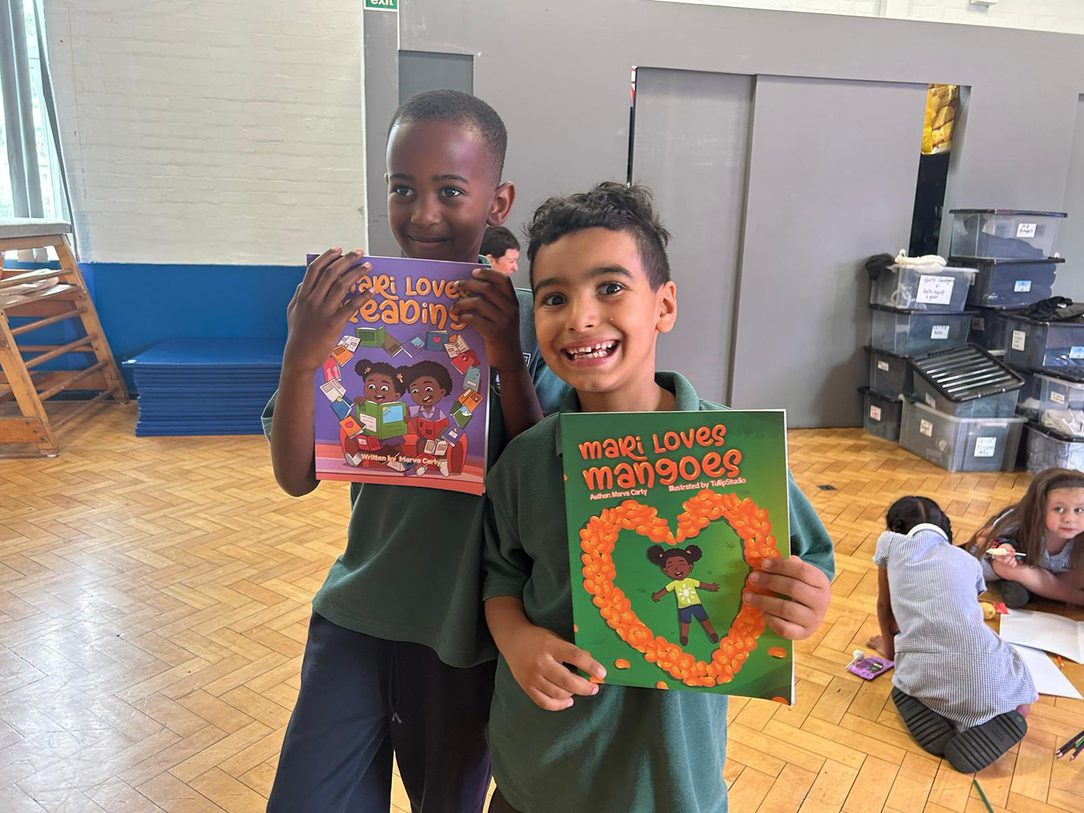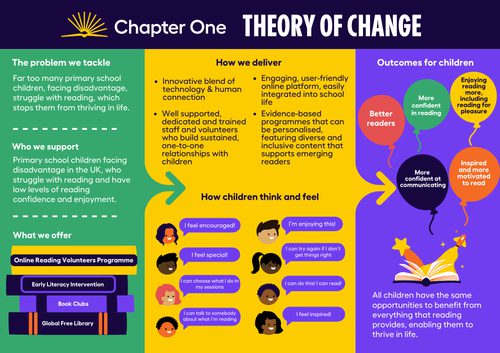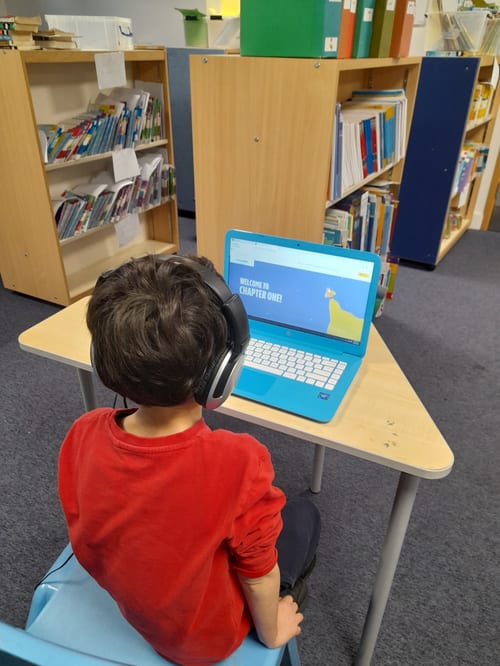10 February 2025
Empowering children’s voices: Creative methodology for evaluating children's reading programmes
We've developed a creative qualitative approach that puts children at the heart of the evaluation process
Share this page
Authors
Dr Yaspia Salema, Independent Consultant on this project, Lecturer in Education at University College, London.
Dr Julie Bennett, Evidence & Impact Manager at Chapter One.
Hannah Gregory, Impact and Evaluation Manager at Bookmark Reading Charity*
At Chapter One and Bookmark Reading Charity, we share the vision of a world in which all children can read. We offer programmes that help children to read through one-to-one support with volunteers from corporate organisations and members of the wider community.
We've long recognised a gap in how reading programmes are evaluated: the voices of the children themselves are often overlooked. This recognition led us to collaborate with an independent consultant - Dr Yaspia Salema, whose expertise lies in developing child-friendly research tools that empower diverse young readers to share their views. Building on our previous work examining children's reading attitudes and behaviours, we've developed a creative qualitative approach that puts children at the heart of the evaluation process.
In this piece we share the ideas which came out of this collaboration. We explore more child-centred methodologies which will help us to understand more about children’s experiences on our reading programmes and how these experiences shape children’s reading attitudes and behaviours.

Shift to more child-centred evaluation activities
Traditional research about children's experiences has often relied on adults’ perspectives. However, contemporary perspectives of childhood emphasise children’s agency (James & Prout, 1997) - their ability to make choices about their lives within adult-set parameters in various domains like home, school and beyond (El Gemayel & Salema, 2023). Underpinned by this progressive view of children as competent social individuals, we sought to develop child-centred qualitative data collection tools to explore these two research questions:
1. What is the child's perspective on their reading patterns, behaviours, choices and motivation, confidence, attitudes, enjoyment and identity as a reader? How do these relate to their experiences of the reading programme?
2. How does the child perceive their relationship with the reading volunteer? What do they like and what do they not like?
Our creative methodology
We developed a two-step qualitative methodology which combines creativity, exploration and genuine participation, with the goal of developing case studies about individual children - our Reading Explorers.
Step 1: The Discovery Kit – empowering creative expression
Each Reading Explorer receives a Discovery Kit containing creative items, which may include arts and crafts materials, a digital camera, and an image of their volunteer. This kit becomes their tool for storytelling, allowing them to document and express their reading journey with their volunteer in whatever way feels most natural to them. Working with family support at home, children create artifacts that capture their unique experiences. These kits serve as open-ended multi-modal tools for collecting data (Clark and Moss, 2011).
Step 2: Day of Discovery – Bringing their story to life
Two weeks later, a researcher spends 2-3 hours with each Reading Explorer in their school setting, in what we call the Day of Discovery. This approach draws on the tradition of 'a day in the life' (DITL) research, capturing rich information about children's daily interactions and reading experiences (Gillen et al., 2007).
The Day of Discovery unfolds in two parts:
1) Unpacking the Discovery Kit together
In a quiet space away from the classroom, the researcher and Reading Explorer unpack the kit's contents together. Through natural conversation and open-ended questions like ‘What's happening here?’, children describe their created artefacts and share their stories, revealing their experiences on reading programmes and how these shape their reading attitudes and behaviours. This multi-modal approach ensures all children, including those with additional educational needs, can express themselves effectively (Clark & Moss, 2011).
2) Reading tour
In this activity, the Reading Explorer becomes the guide, leading the researcher on a tour of their daily reading spaces in school, introducing activities, key people, objects and spaces that play important roles in their reading journey. During the tour, the researcher shadows and interacts with the child, taking detailed notes, welcoming interactions with other children as these can lead to meaningful discussion. These notes can help recreate a sense of ‘being there’ in that specific context when reviewing the data for analysis (Gillen et al., 2007, p.214).
The Day of Discovery concludes with a reflective conversation between the researcher and Reading Explorer, giving children an opportunity to share their insights about participating in this unique research experience.

Looking forward
This methodology represents more than just a creative way to evaluate reading programmes - it's a commitment to seeing children as capable partners in research. At Chapter One and Bookmark Reading Charity we will be piloting this approach and are excited about its potential. We hope this approach inspires others to consider placing children’s voices at the centre of children's reading programmes.
*Hannah Gregory held the role of Impact and Evaluation Manager for Lisa Constance who has now returned and is the key contact for this work
References:
Clark, A., & Moss, P. (2011). Listening to young children: The mosaic approach. Jessica Kingsley Publishers.
El Gemayel, S.M. & Salema, Y. (2023). Negotiating power dynamics through co‐reflexivity in research with young children in disadvantaged communities. Children & Society 37(5), 1596-1611.
Gillen, J., Cameron, C. A., Tapanya, S., Pinto, G., Hancock, R., Young, S. & Gamannossi, B. A. (2007). 'A day in the life': Advancing a methodology for the cultural study of development and learning in early childhood. Early Child Development and Care, 177(2), 207-218.
James, A., & Prout, A. (1997). Constructing and reconstructing childhood: Contemporary issues in the sociological study of childhood. London: Routledge.




